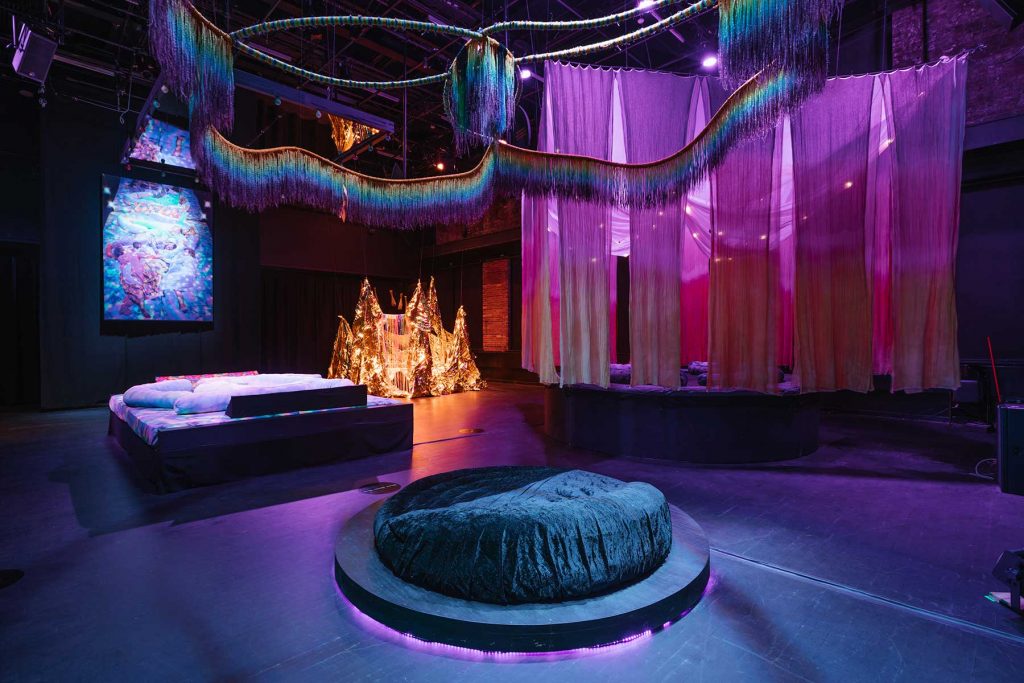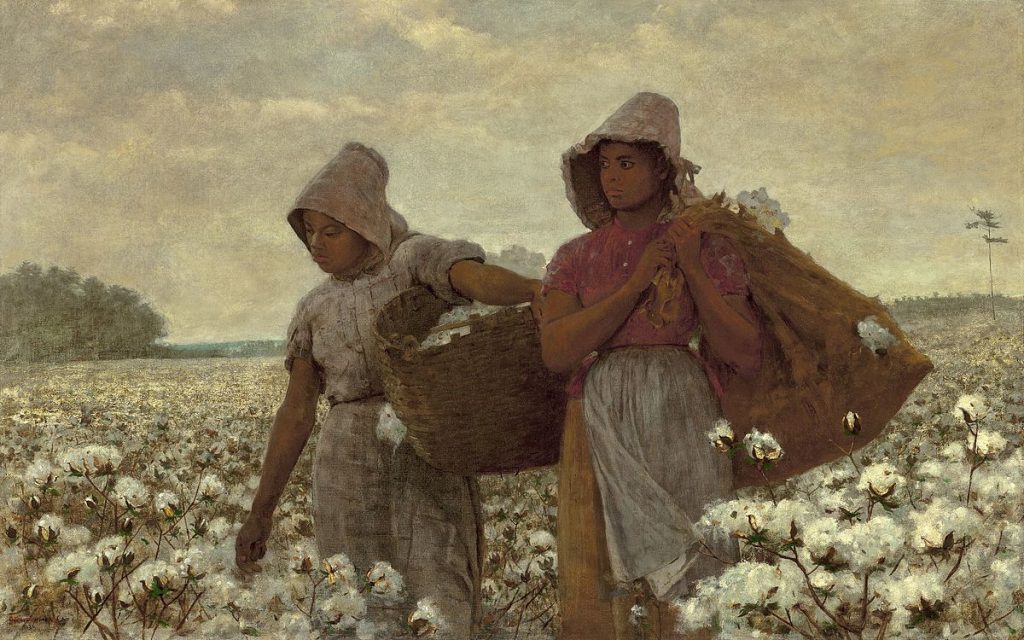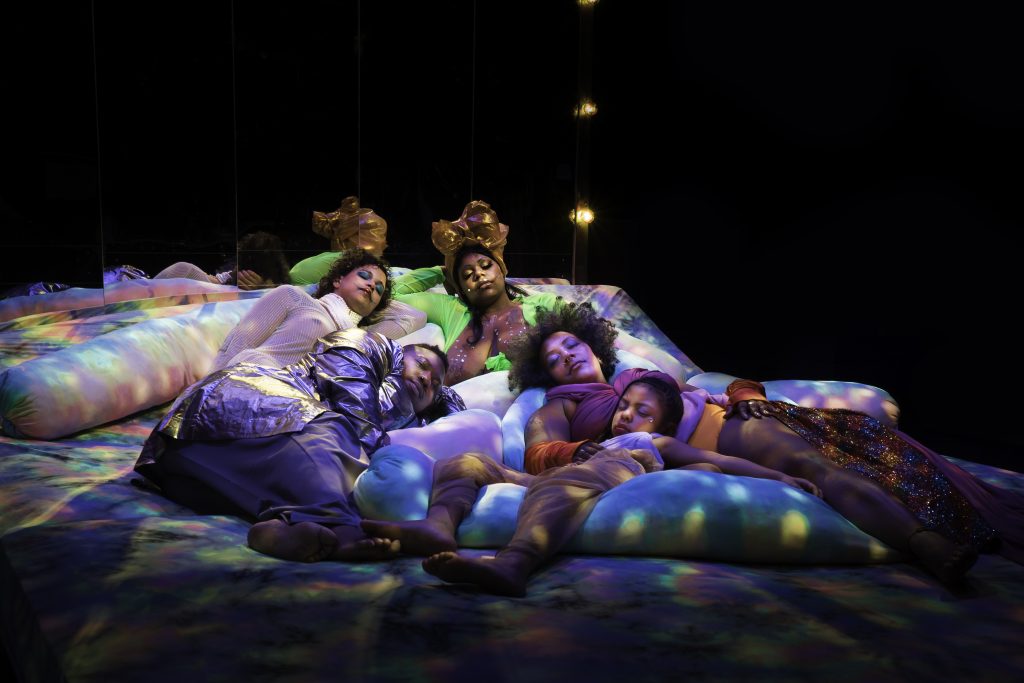Ceding Power: Paying the Rest Debt
The final piece in the “Ceding Power” series explores the discourse on rest as a type of reparations. What does it mean to rest and how can the return of energy aid human repair?
The Ostracon: Dispatches from Beyond Contemporary Art’s Center, an arts writing site by Nicole J. Caruth and Paul Schmelzer, looks at figures and ideas outside the mainstream of contemporary art—from public policy, indigenous rights, and folklore to community organizing, historic preservation, environmental science, journalism, and food justice—that may offer insight into new forms of making art that are more responsive, relevant, and connected to the way we live now as individuals and communities. Taking its name from the pottery shards used in ancient Athens when voting to ostracize community members, the site aims to celebrate, instead of push out, voices from art’s periphery.
The final piece in the “Ceding Power” series explores the discourse on rest as a type of reparations. What does it mean to rest and how can the return of energy aid human repair?
“Being Black is exhausting” is a common refrain that doesn’t quite convey what it means to be fatigued on a multigenerational and cellular level. Every day, we as Black folk expend precious energy navigating systemic racism that’s present everywhere all the time. We spend our lives fighting for equal access to healthcare, education, fair compensation, and basic human rights like fresh foods and clean water, all while trying to protect ourselves and our loved ones from being killed for existing. Living in survival mode takes a toll on the body. The spectacle of dead Black bodies on the news and social media takes a toll on the mind. Fake equity initiatives in the workplace take a toll on the spirit.1Mary-Frances Winters, Black Fatigue: How Racism Erodes the Mind, Body, and Spirit, Berrett-Koehler Publishers, 2020.
“When we ask for reparations, it should include everything from economic to energetic repair,” writes the artist Navild Acosta in his 2018 essay, “Cultural Institutions are Colonial Projects, Where’s the Lie.” In this candid critique, Acosta reflects on the experience of being an Afro Latinx, transgender, queer artist navigating predominantly white cultural institutions. His anecdotes are sadly familiar, from expectations of free labor to the extraction of ideas from individuals and communities of color for institutional gain. Acosta articulates a radically different vision for interaction that centers care and repair. “I am imagining a world where marginal people’s rest/sleep/REM cycles are prioritized … Cultural institutions should be instigating better rest/sleep for those who need it most.”

Acosta refers to the racial and ethnic differences in sleep that scientists have just begun to understand. Studies show that Black people have the highest rates of sleeping disorders nationally and generally sleep one hour less than white Americans, Acosta and collaborator Fannie Sosa told a Creative Capital audience. This was the basis of their project Black Power Naps/Siestas Negras, a multi-sensory installation at the Miami Dade College Museum of Art and Design that beckoned visitors to recline on luxurious beds in the gallery to “reclaim laziness and idleness as power.” Black Power Naps explores rest as a type of reparations—the most talked-about non-monetary form of recompense for centuries of racial injustice in America.2According to the Public International Law & Policy Group, “rehabilitation” is a type of reparations that is intended to provide care and services for victims, beyond monetary payments. Rehabilitation can include physical and psychological care, as well as social and legal services, often in a community-focused context. Accessed at: https://syriaaccountability.org/wp-content/uploads/PILPG-Reparations-Memo-2013_EN.pdf Across the country, artists, curators, and all sorts of health and wellness practitioners are using cultural spaces, academic institutions, and digital platforms to accelerate what feels like a movement for Black rest aligned with the Movement for Black Lives. But what does rest actually mean in these settings and how can the return of energy aid human repair?

To understand rest in the context of reparations, you first must understand how Black people have been systematically denied the right to respite. (What follows is by no means a comprehensive history.) Chattel slavery forced Black men, women, and children to work 20 hours a day. To maintain control over the Black labor force after the 1863 Emancipation Proclamation, Southern states passed a series of laws known as “Black Codes” that led Black men, women, and children to be returned to “slavery-like conditions through forced labor and convict leasing systems that lasted well into the 20th century.” In the state of South Carolina, for example, a Black person who didn’t work on a plantation or as a servant was either taxed for being free or forced into plantation labor for failure to pay that tax. It was a crime to be unemployed or not to toil for the benefit of white men.
Black Codes were repealed in 1866 but subsequent vagrancy laws would make it a crime to be idle “without apparent purpose” or to simply appear suspicious. Modeled after England’s Elizabethan “Poor Laws,” American vagrancy laws have long given police the freedom to deem Black stillness in public space (and sometimes even in private) unlawful. Couple this with anti-Black propaganda, from blackface memorabilia to Hollywood films depicting Black people as lazy stereotypes, and you get a culture that demonizes Black rest. In recent years, this has been hypervisible in mainstream media, from two Black men being arrested for supposedly sitting too long at a Philadelphia Starbucks to a case on the Yale University campus, where a black graduate student found herself answering to police for napping in her dorm’s common space because she didn’t appear to “belong.”
A few months ago, the Oregon-based curator Ashley Stull Meyers and social worker Madeline Harmon launched a community RESTival, a monthlong public program at Reed College in Portland where Meyers and Harmon both work. Open to the public but “birthed for students,” RESTival included lectures, yoga classes, sound baths, and such mostly via Zoom. Mutually energized by the concept of rest reparations, Meyers and Harmon began dreaming of ways to facilitate “community and joy and wellness” for students representing marginalized identities on the campus.

“We were thinking about this tiresome moment that as Black and Brown folks we’ve always been in but especially the past four years as a Black or Brown person engaged in diversity, equity, and inclusion work, activism, and education,” Meyers said. “It just doesn’t seem there’s respite to be found anywhere. It’s this awkward negotiation of there being so much work to do but also understanding that we’re not going to survive this moment if we don’t also take little moments to care for ourselves in real, logistical ways.”
As Meyers told me about “diverting institutional resources” to make this happen, I thought about the extra labor Black women so often do to support the health and wholeness of other people of color. What if the system was set up so that we didn’t have to be double agents in institutions, genuflecting to white comfort so we can serve people who like us? What if we didn’t have to do twice the labor to express care for the people we care about? The health coach in me couldn’t resist asking Meyers about her personal relationship to rest. “It’s tough,” she replied with some heaviness in her voice. “The art world and culture work of all kinds is always moving, and it’s hard to take a minute to take a step back from it.”
RESTival shifts the paradigm of typical arts wellness programming from the instagrammable performance of care to somatic healing practices for the inner repair of human beings. Sadly, this way of thinking is radical in our cultural institutions. I queried further, how else might rest reparations look? What other models might we reimagine? Meyers mentioned artist residencies for their ability to provide time and space to think without the expectation of artists producing a tangible object. “Outside of an art world context, that’s what rest as reparations looks like to me,” she says. “Space to think—we need more of this.”
What’s more important than a specific structure as a reparations framework are the attitudes and behaviors that guide what happens in the structure. “There’s been unconscious expectation that Black folks are going to be cultural contributors even in moments where we’re not meaning to be,” says Meyers. “Even when we’re talking about Black kids on TikTok who don’t necessarily conceptualize what they’re doing as culture work. For me, rest as reparations looks like the right to some sort of opacity when we want it.”
RESTival was inspired by Tricia Hersey, a multidisciplinary artist with a master’s degree in divinity and founder of The Nap Ministry, an organization that creates collective rest experiences to explore the liberating power of naps. Hersey is an undeniable influencer of millenial self-care, rallying her Instagram troops to reject the false urgencies of white supremacist culture by slowing down and opting out. What began as a performance art project Hersey now describes it as a “spiritual and political movement.” Hersey’s definition of rest encompasses anti-capitalism, daydreaming, storytelling, afrofuturism, somatics, community care, womanism, sleep science, and reparations theory. “Resting is simply a connection between our mind and bodies,” she explained to a Zoom audience at the Minneapolis Institute of Art (Mia). “It’s a slowing down. It’s a reimagining. It’s reclaiming our time as our own. It’s slow living. It’s daydreaming. It’s drinking our tea a little bit slower in the morning before we start the grind race. It’s making space for others to rest.”
But how is taking time for yourself an act of reparations? Hersey suggests that by taking the time to rest that was denied our enslaved ancestors we can begin to slow the capitalist systems that do us physical, mental, and spiritual harm. There is a rest debt to be paid and we can claim what is owed through napping.
“Everything in this culture is for us to go, go, go,” said Hersey. “From the plantations back in the South when slavery was invented, and when capitalism was invented in those fields, that energy is still [here] now. That automated way of looking at a body as a machine, that way of looking at property and profit over people, all of these things are deeply entrenched in our society.” Hersey has made clear that her message is for everyone, regardless of race, because the belief that exhaustion is normal and necessary for productivity is a lie of capitalism that we’ve all been conditioned to believe.
Rest, as Hersey beautifully describes it, is a lifelong “meticulous love practice” of healing and decolonizing our bodies and minds from centuries of violence. Black people aren’t the only ones who have ancestral healing to do. On an episode of the Irresistible podcast, Hersey conjured the image of a lynching to make a point I’ve heard repeatedly this past year: What kind of trauma makes a man so spiritually bankrupt that he takes his children to celebrate the lynching of another human being? That poverty of spirit lives in white bodies today because all of our bodies carry, as Resmaa Menakem writes in My Grandmother’s Hands: “The unhealed dissonance and trauma of our ancestors.” The process of reparations, then, is entangled in the spiritual repair of white Americans who must do the work to understand how white supremacy harms them, too.

The Black Power Naps theory of rest reparations emphasizes making space for quality sleep.” Which begs the question: what exactly is keeping us up at night? Studies on ambulatory blood pressure offer a clue. As Dr. David R. Williams, a leading scholar on health inequalities and professor at Harvard’s TH Chan School of Public Health explains, these studies show no differences between young, healthy African Americans and whites during the day. However, researchers found that African Americans maintained a higher level of blood pressure at night, even during sleep. In reviewing this data, Dr. Williams asks, “Could this reflect the possibility that the threats in our environment, potential threats of violence, potential threats of discrimination, is so high that it’s almost as if African Americans need to sleep with one eye open?” The case of Breonna Taylor has confirmed this much: not even in sleep are we safe.
At this point in my writing on reparations, I know that some white arts workers want easy answers to soothe their discomfort and avoid the inner work that equity asks of them. (I’ve read enough emails confirming as much.) In the absence of care and criticality, I can imagine institutions responding to this call for rest by organizing programs to advance a theater of equity that ends up reinforcing stereotypes. Yet I struggle to understand how those who hold power can give rest responsibly. What could rest reparations look like as concrete institutional action? Acosta and Sosa suggest that it’s less about doing than unlearning: “To center the sleep of Black folk, you must not economize, commodify, or extort it.” Since the Middle Passage, white people have had “unfettered access” to the Black body. Black folks can’t rest until that unconscious mindset changes, which feels a long way off.
Black people are often expected to be the voice of diversity in predominantly white cultural institutions, to do the labor of educating white people about racism, no matter the mental and emotional drain, while meeting our everyday job expectations. We’re given the same (and sometimes more) responsibilities as our white counterparts but with less pay or compassion for what it takes to get the work done. Anecdotally, a colleague recently shared with me that a white curator sitting at his desk and behind on deadlines is perceived as doing the “thinking work” his job requires, whereas she, a Black curator, is perceived as sitting idly and expected to pick up his slack. The “Black Codes” of the nonprofit workplace, a set of unofficial rules for Black people, show up in all kinds of ways. In my own experience, after a series of racist incidents at a previous job, the executive director instructed me to “smile or things wouldn’t be good for me”—to mask my emotional fatigue and tap dance to prevent punishment. It’s not being Black that’s exhausting; it’s the systemic racism, social stigmatism, discrimination, and indifference that plays out even in so-called progressive art spaces and institutions.
Frontlines of All Kind, a documentary film about the Black Power Naps opera, premieres tomorrow, March 3, 2021 at 1pm EST, as part of the Ford Foundation exhibition, Indisposable: Structures of Support After the Americans with Disabilities Act. The film will be followed by a moderated conversation and soundscape meditation with the artists.